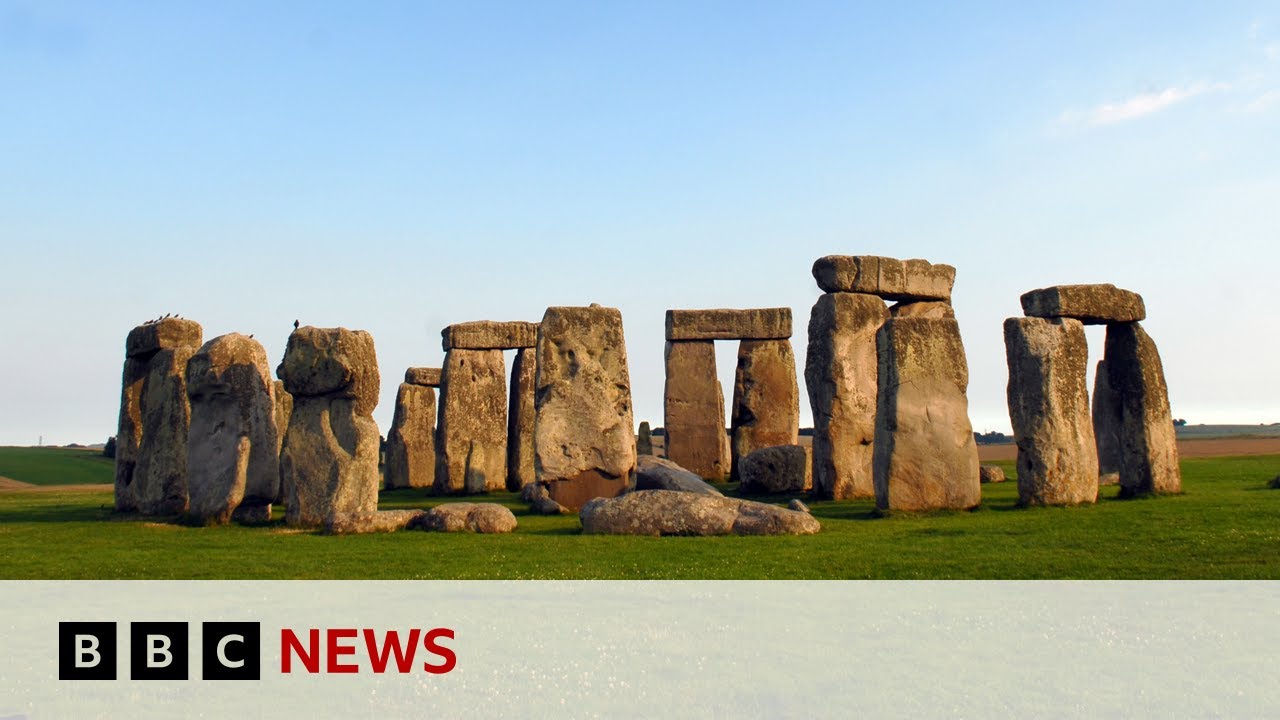Scientists ‘shocked’ at new Stonehenge discovery | BBC News
The six-tonne Altar Stone at the heart of Stonehenge came from the far north of Scotland rather than south-west Wales as previously thought, new analysis has found.
It means that the stone was brought about 700km (434 miles), from Scotland, to the ancient monument, near Salisbury in south-west England.
The discovery shows the construction of Stonehenge was a far greater collaborative effort than scientists realised.
It also suggests that Neolithic Britain was a far more connected and advanced society than earlier evidence indicated.
Subscribe here: http://bit.ly/1rbfUog
For more news, analysis and features visit: www.bbc.com/news
#Stonehenge #BBCNews

36 comments
http://www.youtube.com/@usd1-MrN
What a great parade!
When they wash the potest paint off they found that they are actually made of styrofoam. D&D style. 😂😂😂😂
I'm sure we can find cctv footage from 5000 years ago.
Pretty sure there weren't those distinctions then. Also what no one talks about is the good possibility that this was a matriarchal era, or at least very balanced.
There wasn’t any English in the British isle when the Stonehenge were created. The English came from Germany thousands of years later. The British isle are indigenous to Celtic speaking people. English is a Germanic language and therefore invaders.
How can one infer that this Scottish stone in Stonehenge was dragged or transported from Scotland to this area? Sure, it shows that the stone's origin is there, but there could be other explanations. For instance, a comet impact could have caused stones to bounce around, or a volcanic eruption, earthquake, or other natural events could have gradually moved the stone to that area. While one possible scenario is that people transported it, I think it’s more likely that natural forces were responsible for the stone's movement.
Prolly aliens..
I thought it was only 18 inches high? That looks way taller than 18 inches. 😉
Who cares
People who built this: Let’s make the next generation go crazy wondering whats going on here.
My theory is that giants build it as a altar or a place of worship for their false god or gods.
There was a massive population replacement in Britain some 4-5000 years ago. From what I know ancient dna studies reveal that there is not much relation between the people who built stone hench and the ones who live there now.
Yes, that's correct. The people who built Stonehenge, the Neolithic farmers, were largely replaced by subsequent migrations and population shifts. The genetic and cultural legacy of the original builders was significantly altered, and the present-day inhabitants of the region are largely descended from later migrations, such as:
1. Bell Beaker culture (around 2500 BCE)
2. Indo-European speaking peoples (around 2000 BCE)
3. Celtic-speaking peoples (around 500 BCE)
4. Anglo-Saxon migrations (around 500 CE)
These later migrations and cultural shifts have largely overwritten the genetic and cultural legacy of the original Stonehenge builders. So, while there may be some residual connections, the direct link between the builders and present-day inhabitants is limited.
Anybody else going to listen to spinal tap after this?
Which further proves my theory that Germans hate David Hasselhoff.
Once all the stones are gathered, a great dragon would appear and grant you a wish.
not carried by the end-of-Pleistocene glaciers for sure?
Wow, He Remembers coming there when he was one year old? C'mon y'all ! 😢
why would 1 rock be from a different area but the rest of the rocks are from another ?? very interesting imo
Aliens.
Damn you settled science! 🤬
There is a temple under the ground that they refuse to dig up because it might damage the artifacts.
Which sounds good until you think about it for a moment and realize those artifacts are already damaged from the ground, plus nobody cares when an artifact is damage.
On top of the fact that the UK went across the globe digging up other country's artifacts without a care about the damage.
This is what scientists waste their time on?!? I really think that there are much more pressing matters that NEED addressing.
GHEY
Back when “magic ruled the air”.
How can he remember being 1 year old?
From ChatGPT: "in North America, during the last glacial maximum about 20,000 years ago, glaciers carried boulders from as far north as Canada into the United States, even reaching as far south as Missouri, Ohio, and Indiana. In Europe, similar processes occurred, with glaciers transporting materials from Scandinavia into parts of northern Germany, Poland, and the British Isles."
You can’t remember your time as a 1 year old.
Why do the English keep stealing sacred stones from Scotland?
Simply fascinating.
We all know you are hiding the truth. Just tell us already.
LIZZID PEOPLE!!
interesting 🤔
The English were not there 5000 yrs ago
It is pretty much impossible for anyone to remember anything from when they were one year old. Typically what people “remember” is what they’ve seen in family movies or photos. It is re-created as a “memory.”
There are features in video editing software that can dissolve or fade in and out things like graphics, and we can even animate those actions over however many frames we like. Are you hiring?